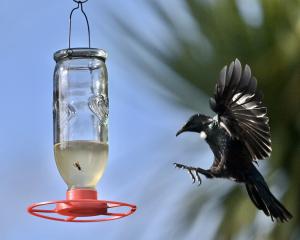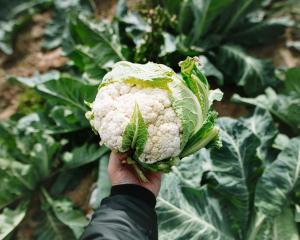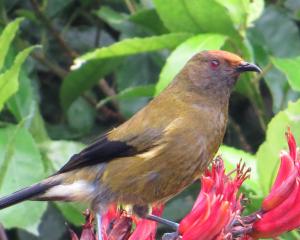A New Plymouth garden with an impressive selection of natives catches the eye of Gillian Vine.
After a pleasant walk along the bank of a stream in suburban New Plymouth, Valda Poletti takes me through the back gate at Te Kainga Marire, the property she and her partner, Dave Clarkson, have spent almost 40 years developing.
"It's just lovely and we're part of it," Valda says of the stream-side reserve that runs from busy Cumberland St to the sea, where it joins New Plymouth's coastal walkway.
When the couple bought the 0.2ha site in a new subdivision, it was a battleground of weeds, thick with gorse and blackberry.
Scraped off, it left them with a bare clay canvas to create their "peaceful encampment", which is the meaning of Te Kainga Marire. In 1977, they moved into what Valda calls their "mountain hut", a comfortable house designed to fit the contours of the land.
The reserve provided a lovely bush background for the predominantly native garden, encompassing wetland to alpine areas. Te Kainga Marire now is recognised by the Royal New Zealand Institute of Horticulture's New Zealand Gardens Trust as a garden of international significance.
"What we've done here is turned our backs on suburbia and created a little bit of the back country," Valda explains.
Taking time to plan the garden meant, by the time planting began, "we knew exactly what was going where".
"Dave was a deer culler before I met him, so I let him have a [back-country] hut," Valda says.
Positioned a short distance from the front gate, where visitors leave their entrance fee in a teapot, the hut is near a wetland area, where moisture-loving natives thrive.
Close by are some of the native irises, among them Libertia ixioides and the less common L. grandiflora.
I'm envious of her vigorous Poor Knight's lily (Xeronema callistemon).
"Sir Victor Davies [of nursery firm Duncan and Davies] sold that to me over 30 years ago and it's still in its original pot," Valda says.
Sadly, my timing is out, so there are none of the flame-red, bottlebrush-like blooms that make it so impressive. A little sun orchid (Thelymitra) has hitched a ride on the Xeronema but it, too, is without flowers.
More than making up for that is the fernery, where a tui nests at the top of a ponga and - although a tad suspicious of the stranger - clearly recognises Valda, source of daily feeds of sugar water.
Descending into an area with a rich, almost primeval smell, I'm delighted to see lots of delicate filmy ferns and a heruheru or Prince of Wales feather (Leptopteris superba), one of my favourite native ferns, whose presence in damp forest areas is said to indicate rich soil.
As well as natives, Dave and Valda have an extremely productive vegetable garden, with a seat where Valda likes to sit to shell broad beans.
"It's really important to enjoy your vege garden," she says.
Tomatoes (Burke's Best Italian and San Mazano are favourite varieties) do best in pots sitting on gravel, which keeps them warm and seems to reduce disease. Alas, carrots struggle because of Psila rosae, an insect whose larvae chomp the roots and Valda is experimenting with covers to prevent the flies laying their eggs.
Apples, mainly heritage varieties such as Reinette du Canada, grow in two parallel lines with a grassy walk between them.
Valda brought in plants from her grandmother's garden, including rhododendrons Pink Pearl and sweet-scented Fragrantissima and a century-old rose, whose name is unknown.
But it is the natives that draw visitors.
English television gardener Monty Don featured Te Kainga Marire on the programme Around the World in 80 Gardens.
He was given a magnifying glass to look at tiny flowers on some natives, which delighted him.
Valda says she was "tickled pink" by his visit and his enthusiasm.
In his book to accompany the TV series, Monty Don described the garden thus: "It is, in every sense, a modern New Zealand garden - friendly, beautiful and proud of its heritage."
It's a fitting description, although according to Valda: "It's just a wild place where we live ... a little boutique garden."
• In New Plymouth, Gillian Vine was the guest of Venture Taranaki and stayed at the Waterfront Hotel, at 1 Egmont St, New Plymouth. Websites: www.taranaki.info, www.waterfront.co.nz












